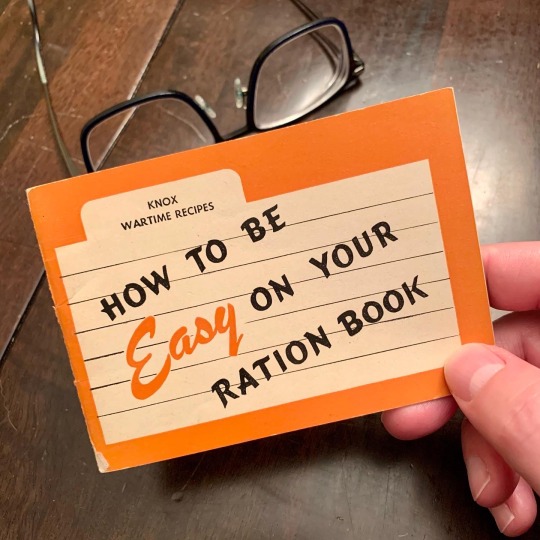#rations
Text
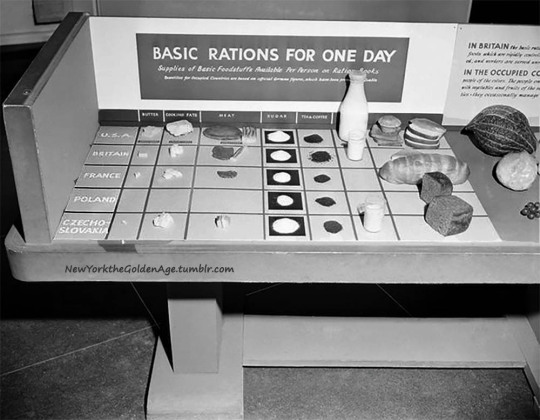
Americans at home had it easy during World War II. This display of foodstuffs, rationed and unrationed, in the United States as compared with several European countries, was an exhibit at the Museum of Science and Industry at Rockefeller Plaza, March 8, 1943. It shows basic rations for one day in the U.S., Britain, France, Poland, and Czechoslovakia. Sugar, tea, and coffee were the only rationed U.S. products at that time (meat and other food items had been rationed earlier) on this chart. In all other countries, every item displayed was rationed.
Charles Kenneth Lucas for the AP via Flashbak
#vintage New York#1940s#World War II#Charles Kenneth Lucas#home front#rations#rationed food#rations World War II#food#food rations#World War II at home
87 notes
·
View notes
Video
youtube
Survival Rations Inspired by History - Just 3 a day will keep you full o...
@uncle-mojave this seems like something you’d be into
28 notes
·
View notes
Text
Sunday Steve - Day Eleven
Things that would be new or unfamiliar to Steve in the 21st century, either due to the time period he grew up in, or his social-economic status and other such factors.
Day Eleven: Toilet Paper
People used many things as toilet paper before commercial toilet paper was available. As indoor plumbing became more common toilet paper became more necessary because pipes were not designed for almanac pages or newspapers.
In the late 1800s toilet paper was still a luxury but it was being developed. "In 1890, toilet paper started to look a lot more like stuff we’re used to seeing today. It came on a roll in perforated sheets. It was a tough sell though because no one wanted to admit to buying it. In Germany, a company called ‘ Hakle’ overcame the problem with the slogan “ask for a roll of Hakle if you don’t want to say toilet paper.” (Link)
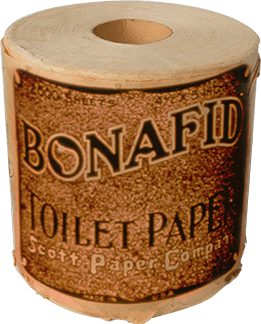
Late 1800s toilet paper. 2500 sheets.
Charmin began marketing its toilet paper around its softness in 1928, as well as selling economy-sized packs of four rolls in 1932 (Link).
There were two types of toilet paper. Soft and hard. "The hard paper was more affordable and was very shiny on one side of it" (Link). Hard paper often had printed text on it (most of the examples I've found are British).
Every source I've found says that toilet paper began to be advertised as "splinter free" in the 1935. Most casual articles don't dig into what this actually means, but I found some ads for the infamous splinter free toilet paper.
Splinters resulted from the manufacturing process, and as you can see in the below images the splinters were usually very small. I haven't been able to find out how genuinely inconvenient this splinters were.
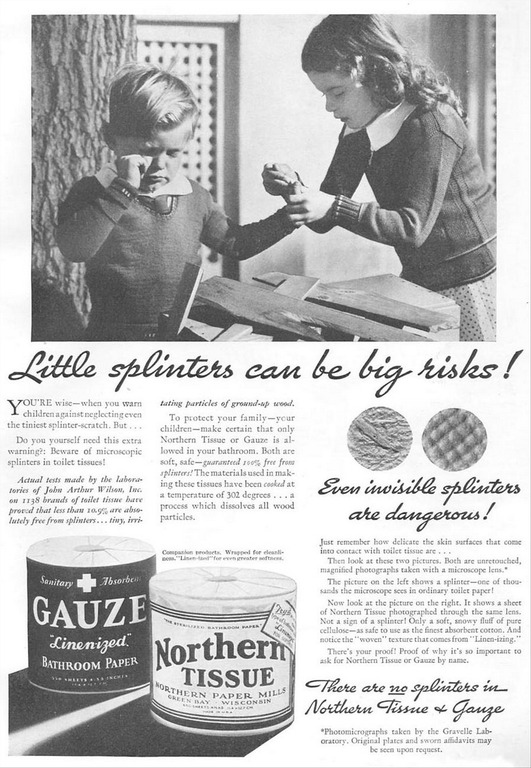

1930s toilet paper ad (Link) (Link)
You can see the various marketing methods for soft toilet paper, treating it like a medical issue and appealing to women.
You can also see 3 rolls being sold for 20-25 cents. I think that is very expensive for toilet paper in the 30s. I've found a source showing 2 rolls of Clifton toilet paper being sold for 9 cents in 1932. (Link) And this link shows 4 rolls of crepe toilet paper being sold for 19 cents in 1930 (Link is behind a pay wall but I managed to download the price list). I'm guessing the rolls in the splinter-free ads are soft toilet paper, and the cheaper examples I found are hard toilet paper.
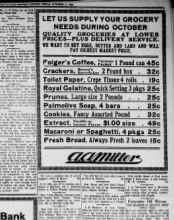
1930 grocery price list. Toilet paper is the third item, listing four crepe rolls for 19 cents.
In 1940 one roll is being sold for 15 cents (Link), but it's not clear if this is soft or hard toilet paper. I'm guessing soft since it's almost the price of four rolls in 1930.
My guess is Steve paid around 9 cents for 2 (19 cents for 4) rolls of hard toilet paper. I doubt he bought soft toilet paper since it cost about 20-25 cents for 2-3 rolls. But I can't know the prices for sure.
One thing for sure is modern toilet paper is softer than the paper Steve would have bought. Britain didn't even start manufacturing 2-ply toilet paper until 1942. Over the years soft toilet paper become the norm (although institutions like schools often have thinner, harder paper).
Given this information, Steve would probably be used to buying harder, cheaper toilet paper for about 9 cents for 2 rolls/19 cents for 4 rolls. Soft 'expensive' toilet paper would be surprising as the norm, and I think he'd find our massive packs of toilet paper shocking. Although as we'll see, soldiers were provided Waldorf paper, which seems to be a more softer, expensive brand.
Army Toilet Paper
Soldiers were provided toilet paper with K-rations and later with C-rations. A soldier would get one accessory packet a day with either ration and it came with twelve sheets of Waldorf toilet paper.
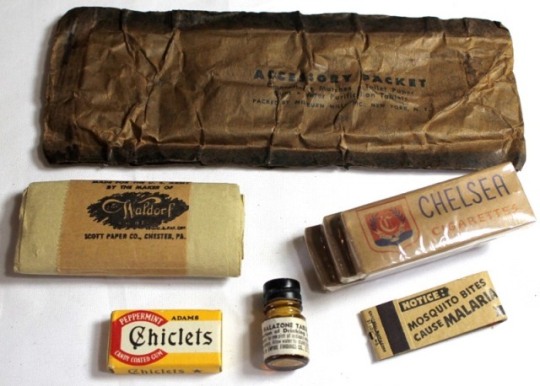
(Link) Accessory packet with Waldorf toilet paper.
You may have seen the factoid that British soldiers were rationed 3 sheets of toilet paper per day compared to American soldiers having 22 sheets. I believe this is a misinterpretation of this book discussing the resources available to American soldiers on base in Britain (pg. 288). But after further research I think the actual number of sheets British soldiers got a day on the front was 4 sheets. (Link) American soldiers got 12 sheets included in their K-ration. (Link)
If a soldier ran out of toilet paper they most likely had to make do. I've seen stories of pages from books being used, or even paper bills. (Link)
Bonus
First paper towels sold 1931 (Link).

1936 paper towel ad
Facial tissue paper originated from gas mask filters in World War One. Kleenex were marketed as a cold cream and makeup remover in the 20s and began being marketed for colds in the 30s. (Link)
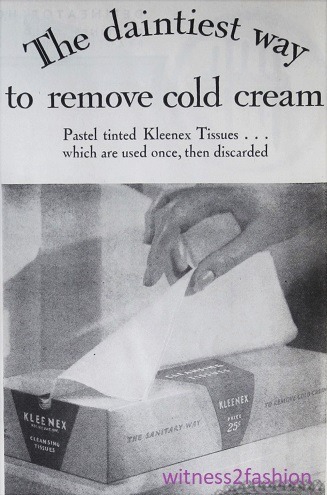
1930 ad for Kleenex for 25 cents.
Personally, I don't think Steve would have spent money on either of these things, but they did exist.
#sunday steve#steve rogers#toilet paper#crepe paper#history#american history#20th century#20th century history#steve rogers meta#meta#kleenex#paper towel#1900s#splinter free toilet paper#1930s#world war two#rations#army rations#early 20th century
12 notes
·
View notes
Note
What kind of food would merchants eat on a looong voyage?
Above all, cracker bread, whether that be the biskit, hardtack, rusk, whatever you want to call it. It's a twice-baked bread meant to be hard and dry so it wouldn't spoil for long periods of time. You could crumble it and cook it with meat fat for a hot meal. Salted pork and fish also kept for a while, you had to soak it to remove extra salt of course.
Of course, on a long voyage, there are regular stops to take on provisions (particularly fresh water), so there would be resupply with fresher foods. After a long stop between ports, any merchant would be eager for fresh food, whatever would be sold at the local markets.
Thanks for the question, Anon.
SomethingLikeALawyer, Hand of the King
12 notes
·
View notes
Text

[Oatmeal] was mainly used to make porridge or 'burgoo' and eaten for breakfast with some form of sweetening, either sugar or molasses. Nelson got into a terrible tizzy about this sweetening in the Mediterranean when Victory's captain, Hardy, wrote him a formal letter in September 1804 stating that there had been no molasses in the ship since the previous June, and requesting that since there had not been an additional issue of oatmeal to make up for this, the men should be paid for the missing molasses as 'savings of provisions'. Nelson sent a copy of this letter to the Admiralty with his own covering letter [...] Could there not be a supply of cocoa or tea sent in lieu of molasses, as had been the case when he was in the West Indies, or at least sugar, he asked.
— Horatio Nelson pressed about feeding the Navy in Feeding Nelson's Navy: The True Story of Food at Sea in the Georgian Era, by Janet Macdonald.
#age of sail#royal navy#horatio nelson#nelson's navy#sailors#food#rations#naval history#maritime history#feeding nelson's navy#janet macdonald#nelson identified as man who would put sugar on his cereal
30 notes
·
View notes
Text

Stocking the Fallout Shelter, Villa Augustina Academy, Goffstown, New Hampshire, on January 22, 1963.
Record Group 77: Records of the Office of the Chief of Engineers
Series: Construction Project Photographs
Image description: Two serious men in suits and eyeglasses hold up a box labeled “SURVIVAL SUPPLIES FURNISHED BY OFFICE OF CIVIL DEFENSE DEPARTMENT OF DEFENSE / CIVIL DEFENSE SURVIVAL RATION CRACKER CONTENTS 28.5 POUNDS NO. OF FRACKERS PER POUND 89 MINIMUM DATE OF PACK 17 OCT 1962”. There are half a dozen similar boxes stacked in the foreground. Next to the men, two nuns hold a sign with the three-triangles-in-a-circle fallout shelter sign.
#archivesgov#January 22#1963#1960s#Cold War#fallout shelter#rations#survival cracker#Villa Augustina Academy#Religious of Jesus and Mary#nuns#Catholocism#religion#there are some great articles about the survival cracker#every so often someone finds a cache and tastes them#let's just say they would not have held up to whatever year the fallout games take place
51 notes
·
View notes
Text

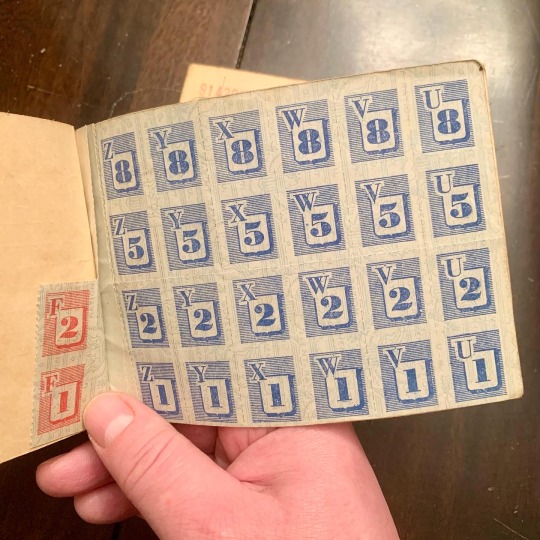


An unexpected find from Saturday’s North Star Auction was a pair of World War II ration books and stamps I found deep in a pile of cookbooklets I won. Well before my time, but It looks like red stamps were for meat and dairy, and blue stamps were for processed foods. How’s that for a bit of history!?
#history#auctions#vintage#antique#paper#war#world war 2#world war ii#wwii#rations#ration books#ration stamps
20 notes
·
View notes
Photo

Medieval food and cooking was always one my most popular demonstrations. It wasn’t just the food, it was the history and culture, in some instances, the legend through symbolising of food and drink that people commented positively about. Maybe you have an event where medieval cookery might be suitable in demonstration or in talk or lecture? Let me know! #medieval #middleages #food #feast #banquet #rations #dailybread #grace #dining #eating #drinking #foodies #foodandbeverage https://www.instagram.com/p/Choh12LBEZ6/?igshid=NGJjMDIxMWI=
#medieval#middleages#food#feast#banquet#rations#dailybread#grace#dining#eating#drinking#foodies#foodandbeverage
21 notes
·
View notes
Text

Soviet soldiers stop to eat their rations in the ruins of a building - date and location unknown
#world war two#1940s#worldwar2photos#wwii#ww2#ww2 history#history#wwii era#world war 2#eastern front#soviet union#rations#stalingrad#red army
41 notes
·
View notes
Text
Chocolate Fuels Armies
“An army marches on its stomach.”* Military leaders have long recognized that it is difficult to arouse soldiers weakened by deprivation. Sadly, though, even a king of Israel could be foolish enough to ignore that and order his soldiers to fast before a battle.
While logisticians rarely receive the accolades of their peers who serve directly in combat, they have always been vital members of…
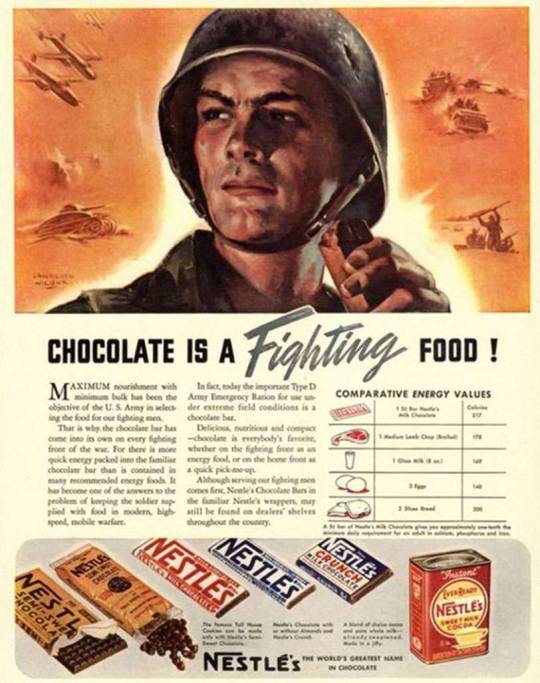
View On WordPress
#C.S. Lewis#Cat o&039; Nine Tails#Chocolate#France#Frederick the Great#J.R.R. Tolkien#Logistics#Military Rations#MREs#Napoleon#Propaganda#Rations#Soldiers#Ukraine#War#WWI#WWII
4 notes
·
View notes
Text
Watch "Food Storage: Not Just For Preppers" on YouTube
youtube
#prepping#survival#emergency#food storage#power outage#dried food#camping#hunting#campfire#fishing#food preservation#rations#winter#Youtube#recipes#cooking
5 notes
·
View notes
Text
youtube
This guy sums up the history of hot meals on the front really well!
And he makes something Steve and the Commandos would have eaten whenever they were with a larger unit.
Apparently it was very well liked along the soldiers and now I'm imagining Steve making it, much to the skepticism of the Avengers 😆
#steve rogers#meta#historically accurate#vintage food#ww2#food#rations#soldier#world war 2#steve rogers headcanons#headcanon#Youtube
15 notes
·
View notes
Note
How long could a merchant go on a work sea route until they had to stop for water and food?
Depends on the size of the ship, the amount of crew, and the amount of space for provisions. In practice, most sea captains knew that after about three weeks, the health and morale of a crew would suffer on a diet of nothing but salted meat and ship biscuit.
Thanks for the question, Anon.
SomethingLikeALawyer, Hand of the King
10 notes
·
View notes
Photo
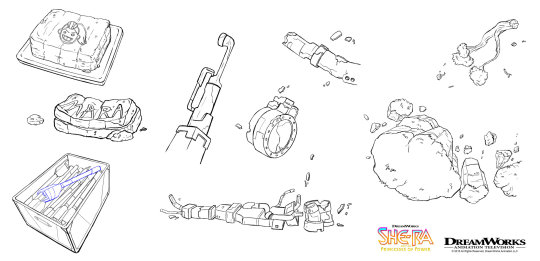
Prop design by Soyun Park
#visual development#soyun park#uhhh#portal debris#food#etherian art#script#weapons#stun baton#just conveniently sitting there in the closet with them :(#unsolicited commentary#cakes#rations
7 notes
·
View notes

